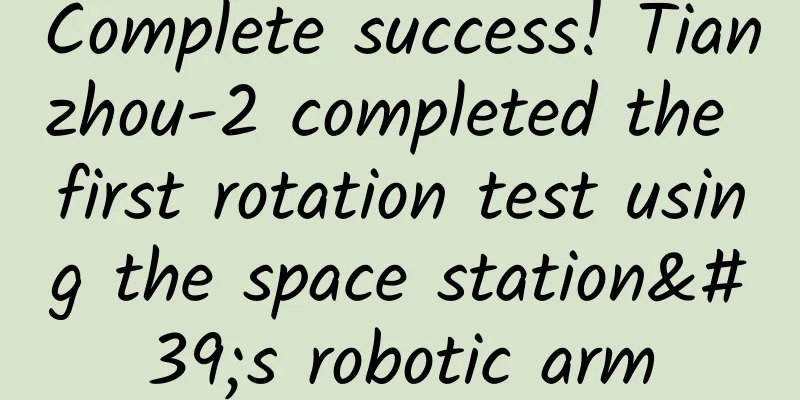Computers can't understand the human series in "The Three-Body Problem"? No problem, take a look at this first!

|
Friends who have read "The Three-Body Problem" must remember the famous scene in which von Neumann asked Qin Shi Huang to arrange a human calculator consisting of 30 million soldiers. The signals displayed by the soldiers holding black and white flags replaced the binary calculation. The picture is from the screenshot of the TV series "The Three-Body Problem" Don't be nervous! You don't need to understand the logic gate circuits of AND, OR, and NOT gates now. Let's take a look at the basic structure of the computer hardware system. If we take the various hardware parts of a modern calculator as an example, we can make a good correspondence. Input devices, such as mouse, keyboard, etc. The controller and the arithmetic unit are often collectively referred to as the central processing unit, i.e., CPU (Central Processing Unit), etc. Storage, as the name implies, is what we often call memory sticks and hard disks; Output devices: monitors, printers, speakers, etc. This set of hardware components is called the von Neumann system, named after this mathematician. But it was not created out of thin air, but a summary of the experience of his predecessors. Because before the popularization of electronic calculators, there was also an era of manual calculators and mechanical calculators. Von Neumann also followed the creative rule of "path dependence", in other words, he walked on the shoulders of giants. Next, let's take a look. Friends, please give me an example of a calculator that comes to your mind immediately! I think most people think of an electronic calculator like the one below, which is powered and can calculate automatically. You only need to input data and calculation rules with keys, and the results will be automatically output on an electronic screen. It is so common that it is inconspicuous... Tuchong Creative If you happen to have watched some costume dramas recently, you should still think of the exquisite abacus. Calculations on an abacus are all done by hand, and the calculation process still relies on the abacus formulas memorized by our brains, and the changes in the arrangement of the beads show the stored results. This type of calculator is a manual calculator and cannot perform automatic calculations. Without further ado, in this article, we will talk about the mechanical calculator that is somewhere in between. 01 Modern silhouette of a mechanical calculator The first industrial revolution was the replacement of human and animal power with machines, and humanity entered the machine age. The second industrial revolution was the large-scale application of electricity, and we entered the electric age. Now we are in the third industrial revolution, with modern conveniences brought about by various information technologies and technological innovations. To put it more bluntly, we are in an era where we cannot understand the principles of things at a glance. The development of calculators has also followed the trend of the times and has gone through three stages, from manual calculators to electronic calculators, and in between, the mechanical calculator stage. But this stage has been forgotten by "rapid changes", and it even seems as if it has never appeared in front of us? After all, when friends under the age of 40 were born, everything around them was electrified... I'm talking about electricity. However, in fact, all of us still have the familiar shadow of mechanical computers around us. 02 Later mechanical calculators Let's first look at a relatively late machine in the mechanical calculator era, the Divisumma 24, which can quickly add, subtract, multiply and divide at a speed of 250 cycles per minute. This machine, designed by Marcello Nizzoli, was mass-produced by Olivetti in Italy in September 1963. The reason for choosing it for introduction is that this mechanical calculator was successful enough in the market in the 1970s - a total of about 6 million units were produced, and it was also the company's best-selling mechanical calculator model in the world. Because it is a relatively late product in the mechanical calculator era, this mechanical calculator is not a purely mechanical design. It needs an external 70-watt worm motor as a power source to drive it. There is no circuit board or sensor inside the whole machine, and there are no high-tech modern components that are incomprehensible. There are only about 3,800 mechanical parts such as gears, springs, and linkage rods that work together to complete the work. This also shows that in the era when it made its debut, the level of mechanical craftsmanship had reached its peak. Image from Multyplus1 When operating, we only need to input the numbers to be calculated, and then the different stages of the calculation and the output results will be printed on a roll of paper above the machine in two different colors of ink. In the figure below, we can perceive the calculation speed of this mechanical calculator under different operation rules by observing the calculation time of the machine. For example, when adding 12 to 45, the calculation result of 57 is almost immediately output to the paper tape. However, the calculation result of 45 times 78, 3510, needs to pause for a while. Image by Angelo The following video is a video of the assembly of Divisumma 24 in 1962. It was recorded and used for training the assembly staff in the factory. The assembly of 3,800 parts is something that even modern people in the 21st century cannot understand without pain... I can't help but sigh, "What kind of mind can design such a thing?" Video source: Archivio Nazionale Cinema Impresa 03 Similar typewriters Have you noticed that this mechanical calculator looks a bit like a typewriter? The same key presses are used for input, and the same paper tape is used for typing output. What's your wild guess? Yes, they are indeed similar in design! When engineer Camillo Olivetti founded his company named Olivetti in 1908, he first produced typewriters. Let’s take a look at the Olivetti Lettera 22 typewriter produced by the same company in the 1950s, one of the most iconic typewriters of that era, and selected as the best design product of the past 100 years by the Illinois Institute of Technology in 1959. This typewriter was also designed by Marcello Nizzoli, the designer of the Divisumma 24 mechanical calculator, and if you have the opportunity to visit the MoMA in New York, you can see this permanent collection. Image via YEGTypewriters 04 Design Convergence Such similar designs are related to a phenomenon in design methods - design convergence. Sometimes, in order to reduce the cognitive cost of users and quickly adapt to a new product, some functions and layouts of commercial designs will show convergence. In addition, this also reduces the pressure of innovation for designers, and for factories with large-scale production, it also reduces the burden of mold opening and assembly for workers. It can be said that in the history of design, the predecessors planted trees and the descendants enjoyed the shade. It is precisely because of the convergence of designs that even if the fantastic ideas are gradually eliminated by the rapid development of science and technology, and it is no longer clear who imitated whom, we can always discover the relics of the past technology. Nowadays, few people are using mechanical typewriters like the one in the picture above, but the keyboard I am typing on and the text displayed on the monitor, aren’t they continuing the traces of its existence in the world in another form of electronic computers? 05 Early mechanical calculators We have seen the later mechanical calculators and were shocked by their exquisite structure. Let's take a look at an early mechanical calculator to calm down. More than 300 years ago, a roller adder invented by Blaise Pascal in 1642 was also called Pascal's calculator. This mechanical calculator can directly add and subtract two numbers. That year, the inventor was only 19 years old, and his original intention was just to reduce the workload of his father who was a tax officer. Does the name Pascal sound familiar? The pressure unit Pascal (Pa) that we learned in junior high school science class was also named after him because of his outstanding contribution. He is an outstanding mathematician, physicist, chemist, meteorologist in the history of science... Let’s look at the actual operation in the picture below. The dial below is being turned to input two numbers in sequence to perform addition or subtraction operations. Image by Yves Serra Let’s take a quick look at the internal workings of a single turntable’s internal linkage mechanism. Image from Colegiul Economic Ion Ghica The linkage between different turntables is that when the value of a turntable reaches 10, that is, after one rotation, this tooth will drive the second gear to complete the shifting. 06 Water meter for addition You should be very familiar with this small mechanical structure. A water meter is actually a mechanical adding calculator that is still in use in the 21st century, but now it automatically calculates your home's water consumption. Let's take a look at the lower layer of a velocity water meter after disassembly. The picture is from fluid mechanics simulation data. The so-called velocity water meter is a mechanical structure that calculates your water consumption by the speed of water flow. You can see that the small balls simulating water flow first pass through the filter and then drive the impeller in the cavity to rotate. Image from Tintschl BESt AG (english) The coaxial gear on the impeller will extend to the upper layer of the water meter. Inside is a set of reduction gears. They drive the reading disk to step and display the addition. Similarly, the latter turntable rotates one circle to complete one carry. It can be said that the gear has become the heart of this kind of mechanical equipment. Image from Tech & Lifestyle A brief look at the first and last two machines in the mechanical calculator stage shows that the biggest limitation to the development of this type of machine is the material itself. The quality of the mechanical parts makes assembly and design extremely complicated. However, it is precisely because of the complexity of the mechanical structure that the mechanical calculator has a high appreciation value, which is perhaps why people are fascinated by the science fiction theme of "steampunk". Fortunately, our lives will always be built on the wisdom of the past, but in a different form of expression. References: [1]http://www.marcello-nizzoli.com/ [2]https://americanhistory.si.edu/collections/search/object/nmah_690100 [3] Books: 01 Changes the World and Operations Research and Ingenuity: A History of the Invention of the Mechanical Computer Author: Zhang Jinmiao, Master of Design Practice, Goldsmiths, University of London Review | Wang Yangzong, Professor of the School of Humanities, University of Chinese Academy of Sciences This article is produced by "Science Popularization China". Please indicate the source when reprinting. |
<<: This archaeological site is almost entirely filled with snail shells!
Recommend
From the perspective of TikTok: How to make a product that makes users "addicted"?
Short videos are really popular. Once upon a time...
Can fitting rooms become an important O2O scene in the clothing industry?
Regarding the Uniqlo nude photo scandal, as the f...
Have you been fooled by wearable devices?
There have always been different opinions about t...
Is it in compliance with the labor law for the company to fire employees if they throw away lunch three times?
Company regulations stipulate that if you throw a...
Do you need to sleep in separate rooms if you have this disease? Huo Qigang often wakes up in the middle of the night because of this disease. Doctors in Zhejiang Province have seen at least 10 patients in half a day. Severe cases may be life-threatening.
Recently, 43-year-old Huo Qigang participated in ...
5 major growth types of brand marketing!
First, let me say the golden sentence: Five growt...
Douyin, Kuaishou, Xiaohongshu, and Bilibili, which one has a lower advertising ceiling?
In October, the article "Watching Douyin and...
How to increase App users by not filling in invitation codes
What should we do when fission marketing becomes ...
Global warming: A detailed explanation of the 2021 Physics Nobel Prize for complex stochastic systems
According to the official website of the Nobel Pr...
All Tibetan areas in Sichuan have been lifted out of poverty! How did the local government do it?
On February 18, the Sichuan Provincial Government...
The latest domestic search rankings for 2018 are revealed! Which one has the largest traffic?
The latest search engine market rankings for Apri...
Luo Xiaobu: Broadcasting and TV operators who block IPTV/OTT are hopeless
On March 3, Luo Xiaobu, deputy general manager of...
Wouldn't it be cool to be able to fly forever without refueling? I'm not talking about satellites
Would you think it would be cool if there was a p...
Mercedes-Benz parent company's profit dropped by 37% as sales in China slowed
According to the Wall Street Journal on the 29th,...
Microsoft CEO: If OEMs don't make Lumia phones, we'll do it ourselves
[[140618]] Since the market share has not increas...









